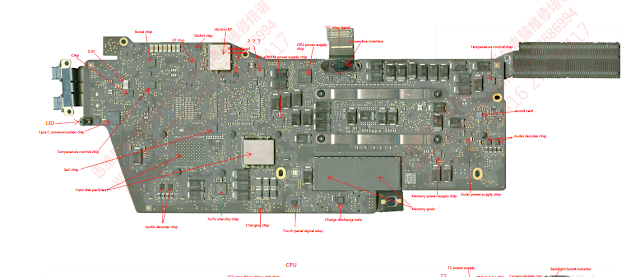MACBOOK 820-01598 PART LOCATION
Understanding the MacBook 820-01598 Logic Board
The 820-01598 is a logic board (or motherboard) used in select MacBook Air and MacBook Pro models. It serves as the central hub for all hardware operations, hosting critical components like the CPU, RAM, storage controllers, and power management systems. Identifying parts on this board requires familiarity with its layout and access to schematics (if available). Below, we’ll highlight essential parts and their positions.
Key Components and Their Locations
CPU (Central Processing Unit)
Location: Centrally positioned, beneath a metal heat shield.
Details: The CPU is often covered by a thermal pad and shielded to dissipate heat. On the 820-01598, it’s typically near the center, surrounded by power delivery components.
Memory (RAM)
Location: Adjacent to the CPU, soldered directly onto the board.
Details: Unlike older MacBooks, modern models like those using the 820-01598 have integrated RAM, so upgrades aren’t feasible.
SSD Storage Controller
Location: Near the edge of the board, close to the SSD slots.
Details: This controller manages data transfer between the SSD and other components. Look for a smaller chip labeled with codes like "SSD3" or "T2" (for models with the Apple T2 Security Chip).
Power Delivery System
Location: Alongside the board’s charging port connectors.
Details: Includes components like the MagSafe/USB-C controller, voltage regulators, and charging ICs. Check for a cluster of capacitors and MOSFETs near the power input areas.
USB-C Port Controllers
Location: Near the USB-C ports on the MacBook’s sides.
Details: These controllers manage data and power delivery through the USB-C ports. Damaged ports often correlate with issues in this section.
I/O Connectors (Keyboard, Trackpad, Display)
Location: Along the edges of the logic board.
Details: Labeled connectors (e.g., J4500 for the trackpad, J4501 for the keyboard) link the board to peripheral components.
- Tools for Identifying Parts
Magnifying Tools: Use a magnifying glass or microscope to read tiny labels on chips.
Schematics: Official Apple schematics (available to authorized technicians) provide exact part numbers and locations.
Multimeter: Test connections and diagnose power-related issues.
ESD-Safe Tools: Prevent static damage by using grounded tools and mats.
- Troubleshooting Common Issues
No Power: Inspect the power delivery section for damaged capacitors or burnt ICs.
Overheating: Check the CPU/GPU thermal paste and ensure the fan connectors (J4700) are secure.
USB-C Port Failure: Examine port controllers and nearby resistors for corrosion.
SSD Not Detected: Reflow or replace the SSD controller if soldering appears cracked.
Final Tips for Safe Repairs
Always disconnect the battery before working on the logic board.
Document screw and component placements during disassembly.
If unsure, consult professional repair services to avoid irreversible damage.

